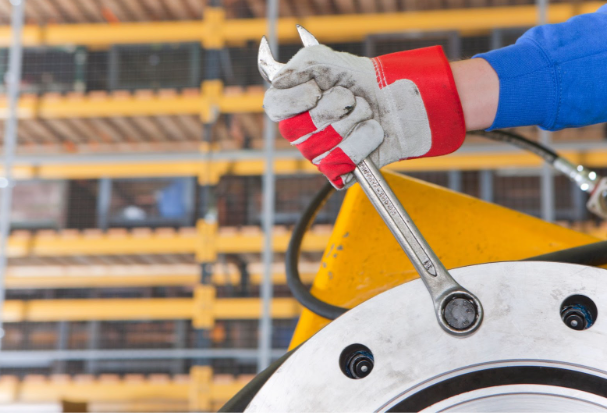In industries ranging from food processing to pharmaceuticals, blending equipment plays a pivotal role in ensuring product consistency, quality, and efficiency. As production lines grow more advanced, blending machinery becomes increasingly sophisticated, requiring a tailored approach to keep it running smoothly. Equipment maintenance is no longer a reactive process—it must be strategic, proactive, and data-driven to prevent downtime, preserve asset value, and meet stringent performance expectations.
This guide outlines best practices, advanced maintenance strategies, and emerging technologies for optimizing maintenance procedures in high-performance blending systems.
The Importance of Equipment Maintenance in Blending Operations
Blending equipment is subjected to intense operational demands: high speeds, continuous usage, temperature fluctuations, and exposure to abrasive or corrosive materials. When maintenance is neglected, these stressors compound, leading to:
- Premature wear and tear
- Inconsistent blending results
- Increased energy consumption
- Costly breakdowns
- Safety hazards
Proactive equipment maintenance ensures blending machinery operates at peak performance, extending its lifespan and reducing total cost of ownership.
Key Components Requiring Maintenance
Optimizing your maintenance plan starts with identifying the critical components of a blending machine. These include:
1. Motors and Drives
Electric motors and gearboxes are the lifeblood of blending machines. However, if bearings aren’t lubricated or belts are improperly tensioned, they can overheat or degrade over time.
Maintenance Tip: Conduct regular vibration and thermal analysis to catch issues before they lead to failure.
2. Seals and Gaskets
Seals keep out contaminants and ensure internal pressure stability. However, they’re prone to wear from friction and heat.
Maintenance Tip: Replace seals on a schedule aligned with usage intensity rather than waiting for leaks.
3. Mixing Blades and Agitators
These components endure constant physical stress and may erode or become imbalanced.
Maintenance Tip: Inspect for material build-up, corrosion, or deformation, especially when processing dense or caustic materials.
4. Control Systems and Sensors
Automation and precision in modern blending require well-maintained electronic systems.
Maintenance Tip: Perform diagnostics and recalibrate sensors regularly to maintain accuracy.
Transitioning from Reactive to Preventive Maintenance
Historically, maintenance followed a reactive model, only responding to failure. This approach is costly and disruptive. Shifting to preventive maintenance (PM) involves performing scheduled checks and component replacements before failure occurs.
Benefits of Preventive Maintenance:
- Minimizes unplanned downtime
- Reduces emergency repair costs
- Improves operational safety
- Enhances product quality
- Increases machinery life
A solid PM plan includes:
- Calendar- or usage-based service intervals
- Lubrication schedules
- Part replacement forecasts
- Maintenance history tracking
Implementing a Computerized Maintenance Management System (CMMS) helps automate these tasks and ensures consistency.
Embracing Predictive Maintenance (PdM)
Predictive maintenance, which uses real-time data and machine learning to forecast equipment issues, takes it a step further. For high-performance blending systems, PdM minimizes unnecessary maintenance while catching subtle anomalies early.
Tools and Techniques:
- Vibration Analysis: Detects imbalance, misalignment, or bearing faults.
- Infrared Thermography: Identifies overheating electrical or mechanical components.
- Ultrasonic Testing: Finds air leaks or electrical discharges.
- Oil Analysis: Monitors for contaminants or degradation in lubricants.
With PdM, you’re not just guessing when to service a machine—you’re acting with precision.
Lubrication Best Practices
Lubrication is a small detail that makes a big difference. Inadequate or contaminated lubrication is a leading cause of mechanical failure in blending systems.
Best Practices:
- Use OEM-recommended lubricants.
- Monitor lubricant condition (viscosity, contamination).
- Follow proper intervals—over-lubricating can be as harmful as neglecting it.
- Automate lubrication where possible to ensure consistent application.
Cleaning and Sanitation Protocols
For food-grade and pharmaceutical blending systems, cleaning is as critical as mechanical upkeep. Improper cleaning leads to contamination risks and regulatory violations.
Best Practices:
- Follow industry-specific CIP (Clean-In-Place) or SIP (Steam-In-Place) standards.
- Use non-corrosive cleaning agents approved for your materials.
- Dry thoroughly to prevent microbial growth.
- Train operators on proper cleaning routines and documentation.
Incorporating cleaning into your overall equipment maintenance schedule ensures compliance and safety.
Spare Parts Strategy
Waiting on a critical part can halt production for days. A spare parts strategy ensures you’re never caught unprepared.
Tips:
- Maintain an inventory of high-failure and long-lead-time parts.
- Standardize parts across machinery where possible.
- Use CMMS to track part usage and restocking needs.
- Establish vendor relationships for expedited support.
By integrating spare parts management into your maintenance plan, you prevent minor failures from becoming major delays.
Training and Documentation
Even the best maintenance plan can fail without proper execution. Skilled personnel and thorough documentation are non-negotiable.
Key Practices:
- Provide regular training on equipment handling, troubleshooting, and PM procedures.
- Keep maintenance logs, calibration records, and inspection reports.
- Use digital checklists to ensure consistency and compliance.
Empowered teams are your first line of defense against downtime.
Leveraging IoT and Industry 4.0
The rise of smart manufacturing introduces a new era of equipment maintenance optimization. Sensors, cloud platforms, and AI are transforming how blending equipment is monitored and maintained.
Applications in Blending Systems:
- Remote Monitoring: View operational metrics from any location.
- Automated Alerts: Receive notifications for abnormal conditions.
- Data Analytics: Identify recurring issues or performance trends.
- Maintenance Dashboards: Centralize insights for better decision-making.
Smart equipment reduces the guesswork and gives you control over every aspect of maintenance.
KPIs to Monitor Maintenance Success
How do you know your maintenance plan is working? Track these key performance indicators:
- Mean Time Between Failures (MTBF): Higher MTBF indicates better reliability.
- Mean Time to Repair (MTTR): Shorter MTTR reflects efficient recovery.
- Equipment Downtime: Should trend downward with optimized maintenance.
- Maintenance Cost per Unit: Helps evaluate ROI of PM and PdM programs.
- Compliance Score: Measures adherence to maintenance schedules and regulations.
Analyzing these metrics empowers you to continuously refine your maintenance approach.
Environmental and Regulatory Considerations
Environmental compliance and safety standards heavily influence maintenance policies in blending environments.
Regulatory Influences:
- FDA / USDA / GMP: For food and pharmaceutical applications.
- OSHA: Workplace safety and machine guarding standards.
- EPA: Disposal and emissions from maintenance procedures.
Ensure that your equipment maintenance processes align with current regulations and adapt quickly to changes.
Final Thoughts
High-performance blending equipment is the backbone of modern manufacturing, but only when maintained meticulously. By transitioning from reactive to proactive strategies, integrating predictive technologies, and committing to consistent training and documentation, manufacturers can unlock unparalleled reliability and performance.
Equipment maintenance isn’t just a support function—it’s a competitive advantage. In a market where uptime and quality define success, maintaining your blending systems with precision and foresight positions your operation for long-term profitability.




